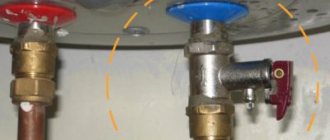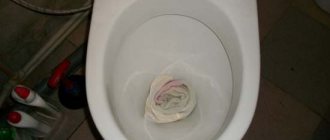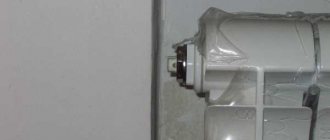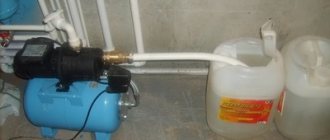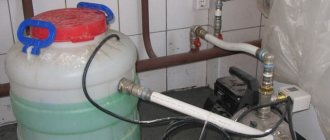How to drain a heating riser
1. Close the valves on the supply riser (1) and return riser (2).
2. Open the drain cocks (3) and drain the heating medium.
The second figure also shows a bottom feed system. Only the supply and return risers are in different rooms. Therefore, taps 1 and 2 can be removed from each other. And the procedure for draining the coolant is the same.
The third figure shows a system with an upper supply of the coolant. The supply line is located in the attic or under the ceiling of the upper floor.
The procedure for draining the heating riser:
- close valve 1 in the attic;
- find valve 2 in the basement and also close it;
- remove plug 3 and drain the coolant.
The same systems are made in multi-storey buildings.
To produce often becomes a forced measure associated with an emergency in the autonomous heating of the house or the departure of the owners for a long period of time in the winter. The question of how to do it was considered in another article.
If you have a natural circulation heating system (Fig. 1), you must immediately take care that the boiler stops working. Only then can you produce draining water from the heating system
... The discharge is carried out through the tap (valve), which should be at the lowest point of the return line, usually next to the boiler. It is advisable to have a hose for such work. One end of the hose must be put on the tap, and the other end must be pulled to the nearest place with the ground, for example, a front garden, a vegetable garden, in extreme cases, drain into the sewer. After that, turn on the tap and wait until the flow from the hose stops. It often happens that not everything has flowed out of the system, make sure that after removing the hose, you can remove the remaining water.
In the same way, you can discharge water from heating with forced circulation, which includes a pump that is not included in the boiler design. The reset procedure is the same.
Many modern systems are equipped with boilers, which include a circulation pump (Fig. 2). The installation method of the heating system differs from the above, therefore, that the pipes of the supply and return lines can be located above the plinth or in the floor structure, like the "warm floor" system.
1. First, turn off the boiler.
2. Put a hose on the tap from which the water from the heating system is drained. It is advisable to put it on the return line (the right pipe coming from the boiler) in order to quickly reset. If they are not under the cauldron, find where they stand. The other end of the hose can be directed into the sewer (an outlet specially made for draining) or simply into a bucket.
3. Open the tap, wait until the water stops flowing (pressure drops) and turn off the tap.
4. Now it is necessary to organize air access to the system. To do this, open the highest positioned Mayevsky tap, usually installed on a heated towel rail (if available). In the absence of it, on any radiator (for a two-story house, on the second floor).
5. Repeat the hose water discharge procedure.
6. Now you can open all the remaining closed Mayevsky taps and again repeat the drainage of water from the heating system.
7. That's not all, now remove the hose from the return line and put it on the supply valve.
8. And do the reset again. The lower the hose is located along its entire length relative to the taps, the more water will drain from the heating.
Please note that water cannot be removed from the underfloor heating system in this way; a compressor or other equipment must be used here.
Draining water from the heating system is not a quick procedure and requires some attention.
How to use a heating system with a gas boiler
To guarantee good operation of the heating system using gas water heating, you need to understand the principles of its operation and follow the rules for installing and operating the boiler. The information below will help you to do everything according to the rules, following the advice of the manufacturers and the rules of using this equipment.
Heating system start
The boiler must be installed and started up by professionals. This process consists of several stages: the installation process, filling the system and setting up its operation. How the heating system is filled with water:
- before starting filling, the automatic pump diffuser must be opened;
- the filling valve is then opened and remains open until the pressure reading device shows a system pressure of 1.5 bar. After which the valve closes;
- then the air vents on the batteries are opened to release the air collected in them. In this case, the system pressure drops, and the filling valve is opened again, bringing the system pressure to the mark of 1.5 bar;
- if necessary, the operation is repeated until the system ceases to accumulate air in huge quantities.
It must be borne in mind that air enters the system with water, in any case, this is good. The minimum quantities of air are removed from the heating system using a deaerator, which is supplied to the pump. This leads to a gradual decrease in pressure. If during boiler operation the pressure measuring device shows a pressure below 0.5 bar, you will need to add water to the system again.
How to add water to the heating system
If the water pressure drops to a critical level (0.5 bar and below), it should be increased by adding water. On boilers with an LCD screen, this situation can be indicated using a code that stands for “low pressure”. We carry out make-up, following the following rules:
- turn off the heating boiler, and de-energize it by pulling out the plug from the socket;
- carefully examine the entire heating system and the boiler itself to make sure that there are no leaks of the heat carrier (they can also be the basis for pressure reduction);
- using the filling valve, we bring the system pressure to 1.5 bar in the same way as during the initial filling with water;
- after closing the valve, the boiler can be turned on.
The make-up valve must be closed in any case. Otherwise, the systemic pressure may rise to a critically high level. In most cases, this value is equal to 3 bars. In such a case, the automatic system will work, and unnecessary water will be discharged using the safety valve.
How to remove water from a heating system
In most cases, for example, when leaks are detected or other situations requiring repair, it is necessary to drain the heat carrier from the system. It is not difficult to do this by following these instructions:
How to completely drain the water from the heating system! Preparing for winter!
- first of all, turn off the boiler and remove the plug from the socket;
- open the valves on the radiator and boiler;
- open the drain valve. It is located at the lowest point of the heating system;
- we drain the water until the value of the device for determining the pressure value becomes equal to zero.
In double circuits, it will also be necessary to remove water from the hot water supply circuit. To do this, after the boiler is completely turned off, open the cold water supply valve and one of the hot water taps in order to ensure complete drainage from the DHW system.
How to drain water from a water supply system
From time to time, it may be necessary to completely turn off all taps, fittings, sanitary equipment, or even drain the water from the entire water supply network (for example, if the house remains unheated for the whole winter).
In this case, it is necessary to perform the following operations, which we give in the technological sequence.
Draining. We turn off the water supply to the house. We disconnect gas and electricity from the water heating systems. In the presence of central heating, it is necessary to open the outlet valve located on the boiler or on the pipes, for which they usually resort to using a hose. Then you need to open all the valves on the radiators. Starting from the top floor of the house or mansion, open all hot water taps in the shower, bath, etc. Do not forget to also drain the toilet cistern.
We remind you again: all water outlet taps on the heater and other equipment must be open. And the last thing: it is necessary to open the outlet taps of the main water supply line so that all the remaining water is gone. If you leave your house or cottage for the winter for a long time, then do not be too lazy to make sure once again that all the water has left the system. Add salt or a glycerin tablet to the water remaining in the siphons as additional frost protection. This will protect the siphons from possible rupture and exclude the possibility of odors entering the room from the pipelines.
Fig. 1.1 - compression plug; 2 - pin; 3 - threaded plug; 4 - nozzle
In the process of draining water from the system, it is often necessary to disconnect some of its sections. In this case, you need to use plugs. The most common stubs are shown in Figure 26.
Filling the system with water. The first step is to close the drain taps on the main pipes. Then you need to close all the taps in the house, including the taps of the boiler and water heater. If there is a cold water heater, open the tap on the radiator and let air in. After all these manipulations, slowly open the main valve of the system and gradually fill the system with water.
Even before turning on the boiler, the batteries must be purged with air. At the final stage, turn on the gas and electricity to turn on the heater and boiler.
Measures to prevent water from freezing. There is a possibility of cold penetration from the street due to malfunctions in the heating system
In this case, it is very important to immediately take the necessary measures against freezing of the pipes, since the water frozen in them will immediately burst the pipeline. In very severe frost, even those pipelines that were laid without violating the requirements can freeze, which often happens with pipes for supplying heat to a garage or basement
What measures can be used to prevent this? If the country house is electrified, in the cold area where the pipe runs, turn on an electric heater or simply place a 100-watt lamp near the pipe. You can even use a hair dryer for these purposes. It is very good if you insulate the pipe before the onset of winter by wrapping it in newspapers and tying it with rope.
If the pipe is already frozen, wrap it with rags made of any cloth and water it with a thin stream of hot water to keep the material around the pipe constantly hot.
A properly functioning heating system is an indispensable component of a comfortable stay in a house or apartment. Occasionally, there is a need to replace radiators, eliminate leaks in the network, move or move a riser closer to the wall.
Any work in the system requires draining the coolant. And this is understandable. After all, it is impossible to open pipes with a full network. Therefore, before starting repair and maintenance work, you need to drain the heating riser.
How should water be drained from a gas boiler?
Select boiler
During long-term operation of an autonomous space heating system, the user sometimes has to drain water from the radiators and from the gas boiler. In order not to spoil an expensive gas apparatus, not to flood the room and not harm yourself, follow the instructions below.
Rules for draining water from a gas boiler:
- Turn off the water heating, following the instructions of the equipment manufacturer.
- We turn off the additional equipment that circulates the working fluid through the heating system.
- We shut off the taps that disconnect the radiators from the boiler.
- If you use a double-circuit boiler, then we shut off the taps that disconnect the hot water supply system and the cold water source from the heating equipment.
- We turn off the gas.
- We check that the boiler is not functioning and the water in it does not heat up.
- We are waiting for the water temperature in the boiler to drop to about 30 degrees.
- We check the reliability of the connection of the drainage system to the sewer.
- We open the tap to drain water from the gas boiler.
- We open the tap located at the water inlet to the boiler.
Draining water from the hot water supply system:
- Check the position of the tap on the pipe supplying cold water to the boiler.
- Open the drain cock.
- Open the cock located in front of the non-return valve.
The information is not a public offer. The indicated prices are recommended, the company reserves the right to change prices.
www.thermona-rus.ru
Replacing the coolant causes and frequency
Water replacement in a closed and open heating circuit is carried out:
During the first heating start.
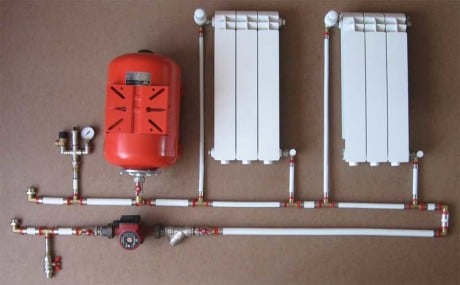
After installation, the system is filled and started.
After seasonal drainage.
When starting up after renovation work.
Regular topping up of fluid is required during operation, if draining was not carried out after the heating season.
Why Drain Your Home System
A question to which there is no definite answer - is it necessary to drain the circuit annually after the end of the heating season? The decision depends on the type, age and material of manufacture of the main elements - pipes and radiators, as well as on the total volume of liquid.
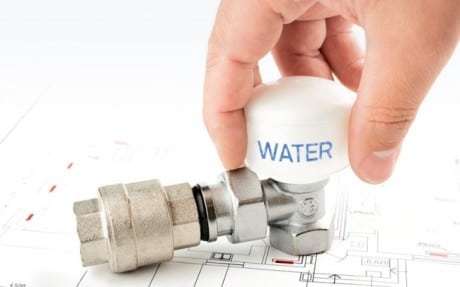

Each type has its own frequency of media replacement
Most often, systems with old cast-iron radiators are drained for the summer. The reason is the appearance of a leak after turning off the boilers. Old cast iron ribs are screwed together with old gaskets. When hot water is inside the batteries, the seals expand, ensuring a stable seal at the seams.
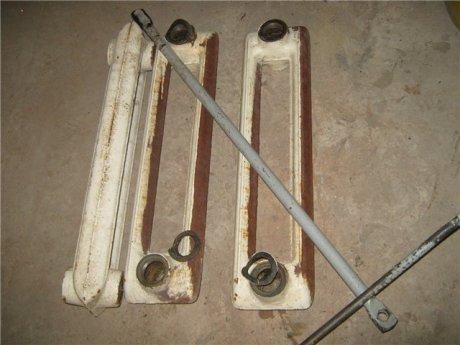

After the water cools down, the material from which the gaskets are made naturally shrinks, and flow begins at the junction of the ribs. But a long downtime of old radiators without water is fraught with accelerated corrosion, rust inside the radiator and old pipes in a dry environment crumbles, and can damage the whole riser.
In closed new circuits, filling the heating system is not an expensive process. But it is not recommended to completely drain the liquid every year - this is not necessary.
Frequency of replacement and topping up of fluid in the heating system
How often do you need to change the fluid in the heating system? A few general rules:
In open-type circuits of private houses, it is enough to simply top up water if the system is hermetically sealed, without subjecting old communications to stress checks in the form of prolonged dry downtime. Replacement is only necessary in case of emergency repair or preventive sealing, after flushing.
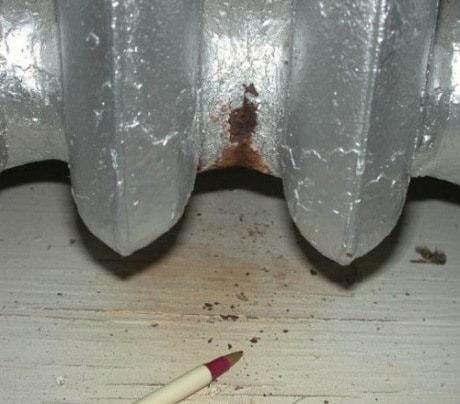

The appearance of a leak - it is necessary to drain the water and carry out repairs
Closed heating systems need preventive flushing and change of the coolant after a few years.
The frequency of filling with a new liquid depends on the characteristics of the water, the service life of the synthetic coolant, and the general condition of the system. With strong airing of the extreme points, it is recommended to identify the cause - to find the place of leakage and check the tightness of the heating network. Usually, water changes are carried out every few seasons.
Heating control and safety
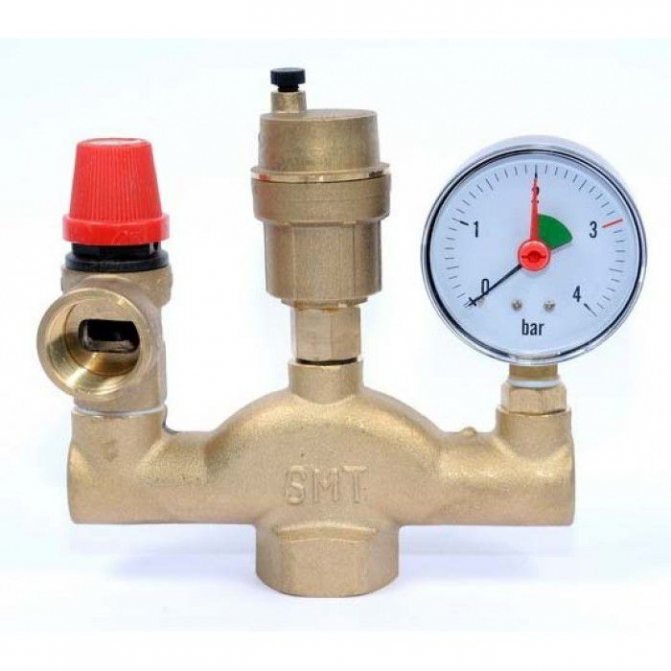

Heating safety group
In addition to the regulating function, there is a group of taps that are responsible for protecting and controlling heating.They are installed in critical areas of the system - in supply pipes, radiators and batteries. In particular, a valve for bleeding air from the heating system is installed directly after the boiler. In the collector heat supply, each manifold must be equipped with it.
These system components are required to perform the following functions:
- Removing air when the coolant overheats;
- Preventing air pockets in the radiator or battery.
To fully understand the functional features of security groups, you need to consider the design of each element.
Some models of gas boilers have built-in balancing valves. You can find out their presence from the content of the accompanying documentation.
Description of the Mayevsky crane
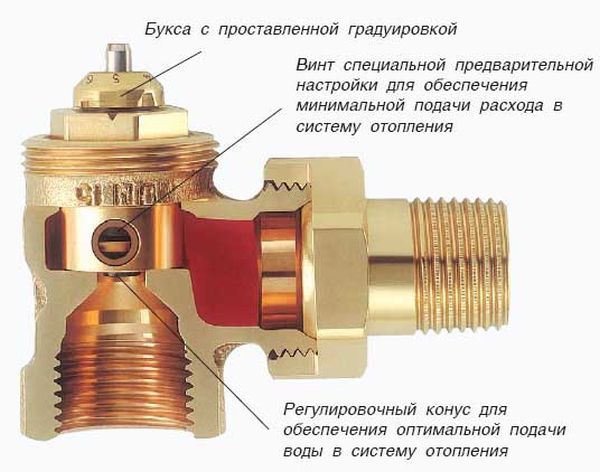

Mayevsky crane design
Mayevsky's taps for heating are designed to remove air locks during filling the system with a coolant or during the operation of heat supply. They are a tapered screw that is enclosed in a housing.
The place of installation of this valve is the upper part of the radiator. When adding water to the system, release the spring pressure on the screw. This creates a small passage through which the air lock exits. Depending on the specifics of the design, the Mayevsky crane can be of the following types:
- Mechanical... Adjustment is carried out in manual mode;
- Auto... The special device is triggered by the opening of the valve. As a result, the air lock is removed.
The first type of taps is most often used to complete heating. However, they have one significant drawback. During prolonged downtime, the screw sticks to the base of the case. Therefore, it is recommended to check the crane's operability 2-3 times a season, regardless of whether the system is filled with water or not.
For centralized heating systems, it is best to choose a Mayevsky crane model with a fuse.
Materials, equipment and procedure for draining water
To do the work you need, you need a compressor, with a good performance, with a receiver for accumulating compressed air.
As you already understood, the automobile will not work for these purposes.
If you plan to drain the spent antifreeze, then you yourself understand that you should not drain it where you do not need it.
You will also need clamps of the correct size for a secure hose connection.
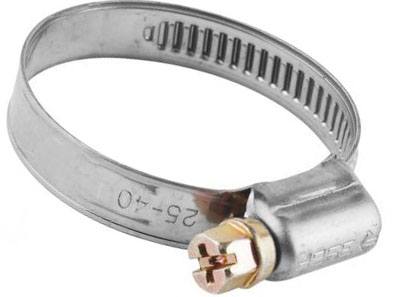

Connect the hose from the compressor to the underfloor heating supply manifold.
The supply manifold may or may not have a special fitting for filling the system under the hose. Therefore, the automatic air vent valve is unscrewed on the feed comb and a hose is connected through a suitable adapter and tightened with a clamp.
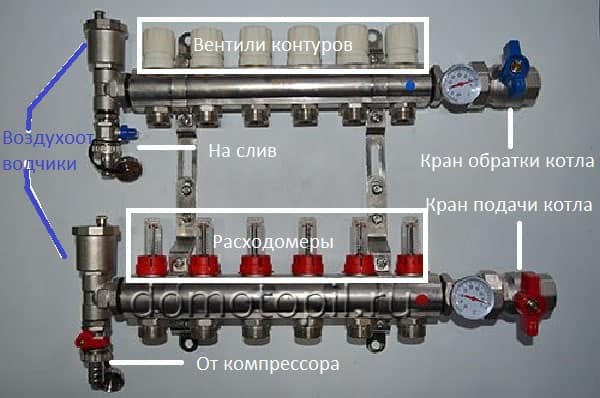

Arrangement of elements on the manifold for draining
- Connect the hose to the return manifold in the same way and lead it to the drain.
- Close the supply and return valves coming from the boiler in the collector area.
- Using flow meters or valves (depending on your collector), close all the underfloor heating circuits, except for one, which, on the contrary, needs to be opened to the maximum.
- Turn on the compressor, open the taps or tap (depending on the type of comb), which are intended for filling and draining the system (those on which the hoses are worn). At this moment, the coolant will begin to flow out under pressure from the drain hose. Wait until the water runs out and air flows. At this point, look at the pressure gauge on the compressor. If the pressure in the receiver at this moment is not large (1-3 atm.), Then close one of the taps on which the hose is worn (it is desirable that it was a tap on the supply manifold, or if the pump is equipped with its own shut-off device, use it better) ... Wait for the pressure to rise to 5 atm. (no more) and blow the floor loop under this pressure.
- Close the blown loop and open the next one.Repeat the same procedure with him.
- Thus, drain the water from all the contours of the underfloor heating.
- For best efficiency, repeat the procedure after half an hour, as the remaining water droplets in the pipe may interconnect and eventually overlap the pipe section at a certain point.
Adhering to this method, you will decide the question of how to drain the water from the warm floor. The only problem is getting a compressor that can handle the task.
Self-pressure testing of the underfloor heating system
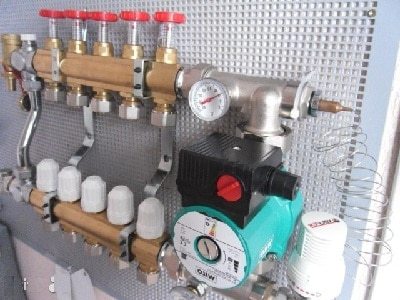

The first launch of a warm water floor
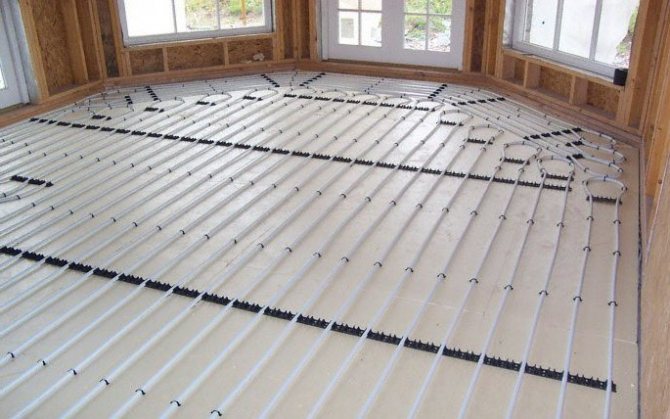

Rules for installing a warm water floor based on a concrete screed
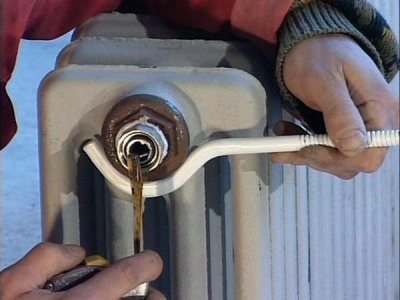

How to flush the heating system underfloor heating and how to flush the heating system in a private house with your own hands completely
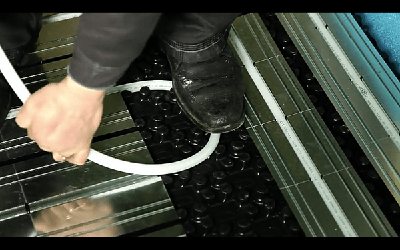

Installation of a water-heated floor without concrete screed
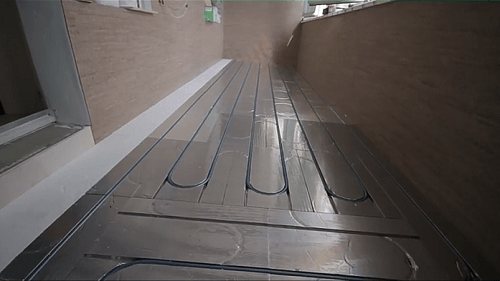

Underfloor heating system technology
Technical subtleties and nuances
In preparation for draining, it is necessary to study the collector device in order to find and mark on the supply and return the location of the valves, marked as follows:
- pitchers - red;
- reverse flow is blue.


Compressor connection diagram for draining the underfloor heating system
Having confused the flow with the return, the drain system will not work - the check valve will block the pipeline.
If there is no receiving container, then you can connect the drain hose to the return valve and stretch it to the nearest sewer intake - toilet bowl, sink or ladder.


Manifold unit for underfloor heating system
Having finished the drainage of water from one circuit, the others are emptied in the same way. During the draining of a section of the system, the valves of the remaining circuits must be closed, and at the end of each stage, the valves of the drained pipelines must also be closed.
For a full-fledged emptying of the circuits, the purging procedure can be repeated after an hour - when moisture from the walls of the heat pipes drains and accumulates in some area.
Boilers
The living quarters are heated by a boiler with one or two circuits. In the second case, the owners also provide themselves with hot water.
Many heating devices also have internal cavities where the coolant reaches a predetermined temperature. And after draining the liquid from the unit, its inner part becomes free of water, and comfortable conditions are formed for working with all nodes and contacts.
The nuances of emptying the boilers in the house were reflected above. But there are some more subtleties:
How to drain water from a double-circuit gas boiler correctly? This refers to the emptying of the heat exchanger. To do this, the boiler is turned off, the hot water tap is opened until it cools down. After that, the flow of cold water is blocked. If necessary, all of its contents are removed from the heat exchanger. Then the union with hot water supply is unscrewed.
How to drain water from a wall-mounted gas boiler of modern modification? Such devices have a drain connection and a de-airing device. These elements work automatically. And, in order to free such a boiler from liquid, they simply open the drain valve after the preparatory stages.
Water drain technology, cleaning heating pipes
Drain valve in the heating system
Before filling the heating system of a double-circuit boiler, it is necessary to drain the old coolant. This procedure is mandatory and, despite its apparent simplicity, must be performed according to a certain technological scheme. First you need to turn off the heating and wait until the water temperature drops to room temperature. Only then can the closed heating system be properly filled with distilled water.
The drain valve is then opened, located at the lowest point in the system. After waiting for the water to drain, you need to open the Mayevsky tap, which is located at the top of the circuit.This is necessary to stabilize the pressure in the pipes. After completing these works, you need to flush the system. This is done before the heating system in a private house is filled. This requires the use of special tools and equipment. A pump is connected to the heating circuit, which pumps flushing liquid into the heating system. It also has a destructive effect on deposits in pipes. After several cycles of passage, contaminants are removed along with the liquid.
The used liquid must not be discharged into the sewer system. It must be collected in sealed containers, which are then disposed of by special companies.
Prerequisites for draining water
This procedure is carried out in the following cases:
- Replacement of heating equipment.
- Correction of boiler malfunctions and repair of individual mechanisms.
- Elimination of leaks on the contacts of valves, fittings and other branch pipes.
- Turning off heating in winter for a long time.
- Replacing the coolant.
It is also important to know when not to do this. There are three situations involved:
- The boiler is not threatened by cold. A little water should be left in it to protect the interior from rust.
- Water has stagnated in the device, as it was turned off for some time. Stale water is being renewed. For this, a full tank is filled several times.
- The boiler is still under warranty.
The essence of the
The first step is to block the branch of the heating riser that goes to the apartment. It is enough just to close the distribution valve located here. For a private house with an autonomous heating system, this process is somewhat different:
- firstly, you need to stop the supply of fuel or electrical energy;
- secondly, you should carefully read the user manual for this case.
Only then can the boiler be turned off. Then close the valve through which water is drawn into the system.
To speed up the process a little, you will need to know those places in the system where taps with air-type valves may be located. All of them must be opened. In this case, nothing will interfere with the process of water flowing to the hose.
During this operation, small water leaks from the system to the floor are possible. Therefore, at the very beginning, it is better to place a large bowl or basin under the place where the hose is connected to the tap (drain). As soon as all the water leaves the system, it is necessary to disconnect the hose and drain the remaining water from it into a substituted container.
Only after completing all the described procedures can we proceed to the main thing - to the work for which the water was drained from the heating system of a residential apartment or private housing construction.
If the owner of an apartment or house does not quite understand how to drain the water from the heating without harmful consequences, then it is better to contact a qualified contractor. For example, a plumbing company that serves a particular house.
With the onset of winter weather, around the end of October, it is imperative to drain all the water from the cottage's water supply system. If the water is not drained, the system will fail, the taps will burst, and the storage water heater will simply rupture.
In all our plumbing installations, we provide two taps for draining water from pipes inside the room, a drain valve on a water heater and drain valves in a well or well.
We need a little time to drain the water:
3. Open taps 1, 2, 3, 4 (see diagram below) - if they were closed for any reason and all taps (mixers) on all floors of the cottage or house, while waiting until all the water from the water supply system is drained into home.
4. Open the drain screw in the well to drain the water from the mains. If you have a drain valve installed, then the water will drain automatically when the pressure drops to 0.2 atm.
five.Unscrew the lower part of the filter (such a transparent flask) by first substituting a basin or other container of at least 5 liters - there is water in it !!! Dispose of the used internal filter. Put a new one next year. Do not screw the removed flask onto the filter for the winter!
6. For reliability, drain the sink siphon.
7. Do not forget to drain the toilet bowl and the toilet itself.
How to protect the system from freezing?
In addition to being able to drain the water, the system must be protected - at least partially - from frost. It is not only a simple water drain that can save the individual water supply system from freezing - modern materials and technologies are at your service. Use faucets with ceramic fittings and taps with rubber seals to protect the water shut-off valves from freezing of water residues. The pipes most resistant to freezing of water, as we said above, are not made of steel, but of low pressure polyethylene (HDPE). Flexible plastic is able to withstand a slight increase in the volume of internal ice and not collapse at the same time, but still it is safer not to check the water supply for strength and remove all water from the water supply system before the onset of cold weather.
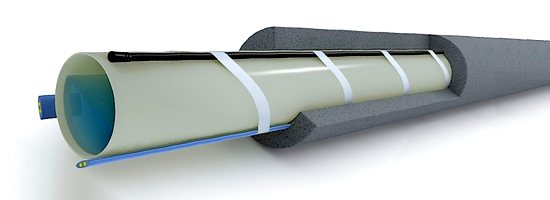

pipes with insulation and heating
Lay the water supply pipes from the well to the residential building along the bottom of a trench dug to a frost-free depth. This guarantees complete protection of the outdoor water supply system from any frost. Pipes should be sloped towards the water source so that the backflow is unimpeded. Pipes leading to the surface - for example, a short section of pipe from a trench to a house - should be protected with a heating cable.
It will not be difficult to drain water from the water supply system for the winter if this function is initially incorporated into the design of the external and internal water supply system. A technically competent solution to this problem is possible only if the design and distribution of pipes for individual water supply will be entrusted to professionals.
To the list
Now the water remains only in the water heater, we drain it too:
2. During installation, we always install a drain cock (6) and a safety valve (5). If there is no flexible hose (optional) on the drain cock (6), install it. With flexible piping, it is more convenient to drain water into a container located on the floor. The volume of the drained water is equal to the volume of your water heater!
3. Wait until the water is completely drained from the water heater drain cock. There is now some water left in the safety valve (5). To drain water from the valve, turn the lever on the valve up. Note: on some valve models, the tongue is held in place by a small screw. The screw must be unscrewed, drained and put in place.
How to drain water from the heating system
When is it necessary to drain the water from the heating system? Most often, the need for it arises when it is necessary to clean or replace a heating radiator, for example. If we are talking about a city apartment that is connected to a central heating system, then a similar operation can be carried out independently on the inner section of the network. In the case when it is necessary to drain the heating system of a private house equipped with a boiler, it will have to be temporarily emptied.
The essence of the
The first step is to block the branch of the heating riser that goes to the apartment. It is enough just to close the distribution valve located here. For a private house with an autonomous heating system, this process is somewhat different:
- firstly, you need to stop the supply of fuel or electrical energy;
- secondly, you should carefully read the user manual for this case.
Only then can the boiler be turned off. Then close the valve through which water is drawn into the system.
Only then can the boiler be turned off. Then close the valve through which water is drawn into the system.
To speed up the process a little, you will need to know those places in the system where taps with air-type valves may be located. All of them must be opened. In this case, nothing will interfere with the process of water flowing to the hose.
During this operation, small water leaks from the system to the floor are possible. Therefore, at the very beginning, it is better to place a large bowl or basin under the place where the hose is connected to the tap (drain). As soon as all the water leaves the system, it is necessary to disconnect the hose and drain the remaining water from it into a substituted container.
Only after completing all the described procedures can we proceed to the main thing - to the work for which the water was drained from the heating system of a residential apartment or private housing construction.
If the owner of an apartment or house does not quite understand how to drain the water from the heating without harmful consequences, then it is better to contact a qualified contractor. For example, a plumbing company that serves a particular house.
Shut-off valves for heat supply
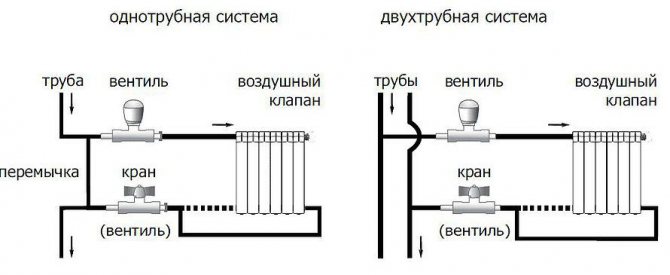

An example of piping radiators using taps and valves
All taps for radiators and pipelines work according to the general principle - with the help of a shut-off element, they limit the flow of coolant in a specific section of pipelines. However, the speed and degree of regulation of this process depend on the specifics of the design of the valves.
First of all, for the correct operation of the system, taps for heating radiators are needed. Depending on the design of the closure element, they are divided into two types:
- Ball;
- Needle-like.
It must be remembered that during the operation of the heat supply, situations may arise when it is required to completely limit the flow of the coolant into the radiators or a section of the pipeline. Ball valves are designed for this. If you need a smooth adjustment of the volume of the incoming liquid, a needle valve is installed.
Control valves for heating are characterized not only by dimensions and design data. The materials of manufacture have a great influence on the period and quality of their service.
Ball Valves
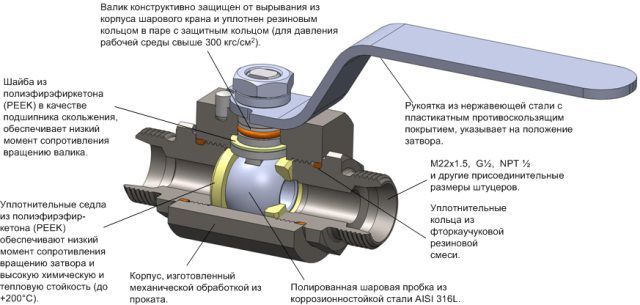

Ball valve design
If it is necessary to quickly cut off the water, ball valves should be installed in the radiator or pipe section. Their design consists of a spherical core with a through hole. It connects to the control handle, through which the component operates.
Depending on the material of manufacture, it is possible to install a polypropylene ball valve for heating or its steel analogue. It all depends on the heat supply site where it will be installed. In addition to this factor, when choosing, you need to take into account the type of connection. It can be designed for heating radiator taps or pipelines:
- Flanged... They are used in lines of medium and large diameters. Mostly made of steel, its alloys or cast iron;
- Coupling... The most common type of polypropylene ball valves for heat supply. Connection to the pipe section is carried out by means of a permanent connection or by soldering. Adhesive is rarely used to form a mounting assembly.
These valves for heating pipes are characterized by a quick shut-off of the heating medium. It is enough to turn the control handle 90 ° to completely stop the movement of water into the section of the line or the radiator.
During installation, the direction of movement of the coolant must be taken into account. All plastic ball valves for heating have a special indicator on the body.
Needle cranes
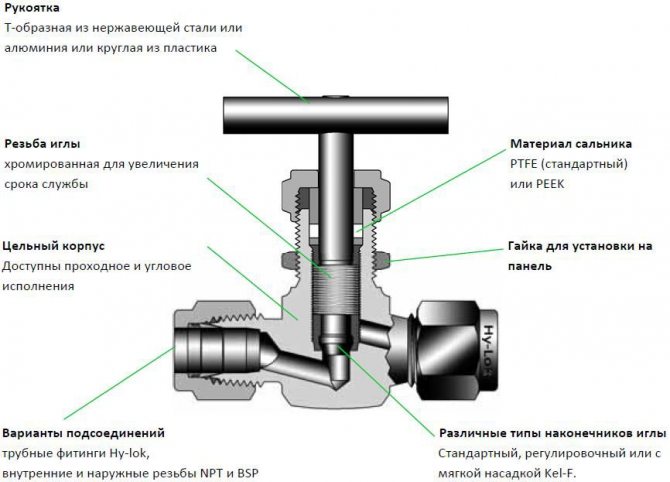

Needle valve design
If you need a smooth adjustment of the fluid flow, the heating system should provide for the installation of needle taps for heating.Their main difference from spherical ones is the presence of a rod, which, with the help of a threaded mechanism, is lowered or raised, thereby reducing the throughput in this section of the pipeline.
Depending on the field of application, this type of valve is shut-off, regulating or balancing. The difference in design is determined by the shape of the needle rod, the characteristics of the threaded regulating element. Most of the valves for heating radiators have a standard design and are designed for smooth regulation of the heating medium flow.
When choosing, it is recommended to pay attention to the following characteristics of needle fittings for heat supply:
- Connection type - coupling or flange;
- The degree of adjustment of the position of the rod;
- Manufacturing material. In polypropylene pipes, the installation of plastic taps for heating is required. If steel lines are installed in the system, then the shut-off valves should be selected from the same material of manufacture. This will avoid the difference in thermal expansion of the components.
The use of these structures as taps for draining water from the heating system is not recommended. In this case, ball models would be the best option.
All taps for heating batteries are designed for a certain indicator of maximum and optimal pressure. This characteristic must correspond to the calculated one. Otherwise, the system will depressurize.
Some heating problems that do not require draining the water
Most often, heating problems are associated with the fact that water does not circulate in the heating system, for various reasons.
There are many reasons, and the most common are the following:
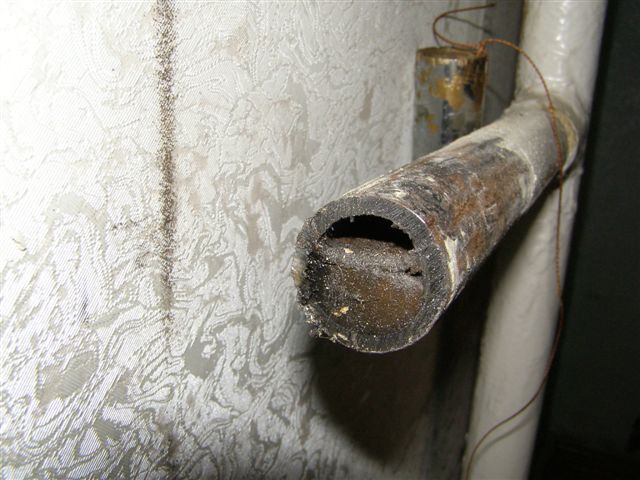

Many irregularities in heating systems are interconnected, for example, water gurgles in the heating pipes. This phenomenon can cause discomfort and complaints - the radiators in the house make noise. Each person perceives the sounds that the heating system can make differently. Someone thinks that the heating is gurgling, another perceives these sounds as a hum. Unpleasant sounds include knocking in radiators during system operation.
Noises in heating circuits are phenomena of the same order and there are many reasons for them:
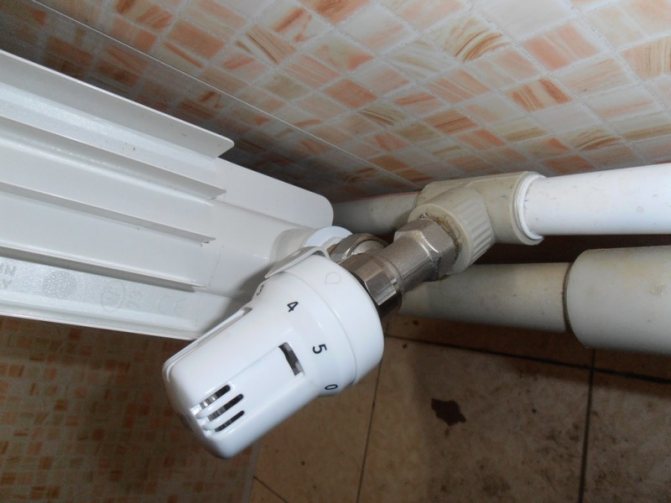

The reasons listed are the most common. In any case, if there are various unpleasant noises in the heating system, which were not there before, you need to carefully inspect and analyze the operation of the circuit.
After establishing the localization of the malfunction, it must be eliminated.
But if it does not work out on your own to find and eliminate the malfunction, then you need to contact the specialists.
To category: Water supply and heating
How to drain water from heating batteries
Radiator
With the onset of October, the temperature, both outside and in apartments, gradually decreases. Each of us thinks: "The main thing is to hold out until the beginning of the heating season." However, the situation does not change from year to year. The media announces that the heating was started up on time and without delay, but many of the batteries remain cold. It is even more offensive when the warmth still reached the neighboring apartments, but not yours.
The reason for this unpleasant situation is the formation of air jams along the "riser". These plugs clog up the batteries on different floors of the building and lead to the fact that hot water, which carries the long-awaited heat, cannot break through them. There are several ways to solve this problem, which I would like to consider below.
Solutions to the problem
The best option is to leave an application with the MUP or HOA and wait for the locksmiths. However, the wait can take up to several weeks. Many people want to resolve this issue as quickly as possible, so they are independently engaged in heat supply to the apartment.
Advantages and disadvantages of self-draining water
The main disadvantages are the following:
Damage to battery drain mechanisms
As a rule, any equipment tends to "age", and those associated with water also coke over time. If you open the drain mechanisms of the battery, release the air and drain the water on your own, then you may not be able to close them. And this can lead to flooding of neighbors, and, naturally, the heating will disappear in the entire entrance until the malfunction is eliminated.
Loss of water pressure in batteries
The main advantage of self-cleaning batteries is that heating is brought to the apartment more quickly, because you don't have to wait for locksmiths.
Work order
- It is good if all batteries have a Mayevsky tap (valve) and two shut-off valves. Otherwise, you will have to invite locksmiths to avoid unpleasant consequences.
It is recommended to bleed air and drain water from the battery in the following sequence:
- Open the battery shut-off valves. They are considered open when their handle is located along the pipes through which water flows in and out.
- Open the tap (valve) of Mayevsky, located in the upper plug of the battery.
- Wait for water to flow through the Mayevsky tap. The water will flow right after all the air has gone out through this valve.
- Drain the water until an even flow is ensured. When there are no more air bubbles left in it, this will indicate the elimination of the air lock.
- Close the Mayevsky valve.
- Adjust the heating of the battery with shut-off valves, providing the necessary heating to the room.
It should be noted:
It is recommended to drain the water from the battery yourself only if you are confident in the reliability of the equipment and in your own strength. Otherwise, the water circulating in the heating system will only bring trouble. The safest option is to invite specialists from the service organization and transfer this "headache" onto their shoulders.
How to properly drain the water from the system
If a summer water supply system was organized on the site and water rose from a shallow well or well, then in addition to draining the water from the internal wiring system in the house, it is necessary to pull out the pump so that the water in the water supply pipe does not freeze. In such simple systems, there are usually no specialized methods for convenient draining. If water is supplied to the house from a well with a caisson, then the pump does not need to be lifted from the well - it is enough to open the drain valve above the head and water from the water supply system will return to the well. The drain cock is located between the check valve and the accumulator. In the process of draining water, all taps at the draw-off points must be open. If the house has a storage tank, drain the water from it. Do not forget about the summer water supply located on the street - it will suffer from frost before anyone else.
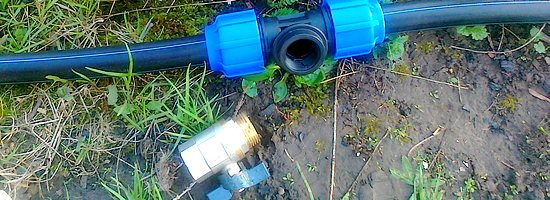

To effectively drain, water pipes must have a certain slope so that all water is guaranteed to leave the system and does not linger somewhere inside. A small amount of water remaining in the pipe and turning into ice can break the pipe and break the tight connection. Even a solid steel pipe will not be able to withstand the pressure of the ice that forms. Water from the water heater is also discharged through the drain valve connected to the tee. The tap and tee must have a hose nozzle before the check valve on the incoming hot water pipe. Another tee with a tap to supply air when draining the water should be installed on the outlet pipe from the heater.
If, for some reason, the drain taps were not installed during the installation of the water supply system, and frosts are about to hit, then you can remove water from the pipes using a compressor. Getting into the pipes through the tee, compressed air is able to displace all the water out.The compressor can be used even with a drain cock if you want to purge the system and make sure that not a drop of water remains in it. Air purging is especially important if the internal piping in the house is made of hard plastic pipes, which, for the sake of design, are mounted strictly horizontally. In this case, complete drainage from the system is obviously not guaranteed and the use of purging is mandatory.
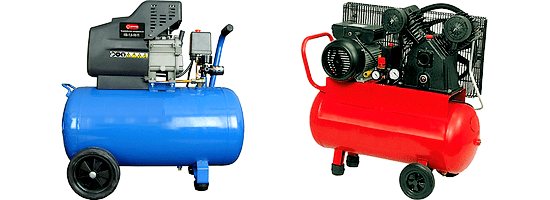

If you live in a country house permanently, and the heating system does not use antifreeze, but ordinary water, then before a long departure in winter it will also have to be drained so that the heating pipes and radiators do not fail. Of course, for such cases, various in complexity and price options have been developed for standby heating of the water supply system, heating, or the room as a whole to a temperature of several degrees above 0 C. But all these methods do not guarantee complete protection, because the control of a boiler or other heat source mainly occurs using electronics, and in your absence, the electricity can be turned off. In addition, electric heating equipment that is constantly on in the absence of the owners increases the risk of fire. Therefore, the best, cheapest and most reliable protection of the heating system against freezing is the use of antifreeze.
But if it happened that instead of antifreeze, water is used as a coolant, then how to properly drain this water from the heating system? Shut off the boiler or close the distribution valve on the pipe from the riser. Close the valve through which water is supplied to the heating system. To drain water from the radiator system, use a hose of the required length to drain the water to the place of discharge into the sewer or outside. Open the drain valve on the radiator, and in the heating system, open the tap with an air valve - this will speed up the drainage of the water.
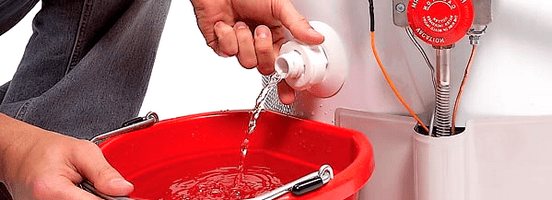

Where else can the water stay? Remember to drain all siphons (water traps). There are water locks in every home, they are located in the curved sections of the drain pipe under sinks, under bathrooms, in toilets. Also, water remains in the coarse filter, in the main filter unit, in the washing machine, dishwasher and in the electric water heater. It's easier to say, before you close the cottage for the winter season, check all the devices to which water was supplied in summer.
All work on draining water and preserving the individual water supply system must be carried out at a temperature not lower than + 5 C.
System design features
The design of the heating system in an apartment building is of two types: two-pipe and one-pipe. The single-pipe system has the main disadvantage - water cooling on the way to the upper floors. Heat is directed from bottom to top under pressure, bypasses all heat loops and flows back through the same pipe.
In a two-pipe heating system, the coolant returns back through the second pipe, and the temperature is kept high when it is supplied to the system throughout the entire route.
Heating systems are also divided into open and closed. In an open system, water comes directly from the heating plant and is distributed through the heating and hot water pipes. Most apartment buildings are arranged according to this type.
In a closed system, water is supplied for heating purposes only. From the heating plant, water is distributed to the heating points, where it is brought to the required temperature before being supplied to residents. A closed autonomous system is also installed in private houses. The installation of an autonomous closed heating system is carried out with the expectation that any part of it can be turned off and the water drained without damaging the rest. For this, ball shutoff valves are installed at the inlet and outlet of the radiators. A spare pipe is installed - a bypass. The taps allow you to shut off the coolant supply.
In order for the heating system inside the apartment to be serviced without problems, it must be installed in a certain way. The batteries are placed on a slope so that the water can be drained quickly.
To drain water from the heating system, the battery must be mounted in a certain way
Batteries should be equipped with shut-off valves, a Mayevsky valve and a water drain valve. In most cases, old cast-iron batteries do not have any fittings. They have a plug installed in the lower part, but over the years of operation it tightly grows together with the radiator and is repeatedly painted over.
There is water in the heating riser and batteries of an apartment building at any time of the year, only its temperature is different. In winter, hot water moves in the system, in summer it is cold. When carrying out serious work, draining the coolant from the pipes is required in any season.


